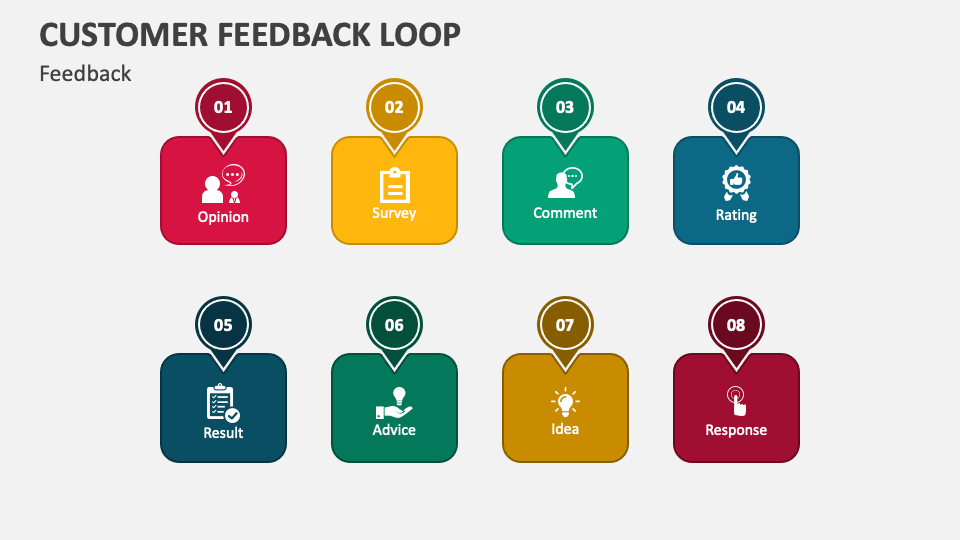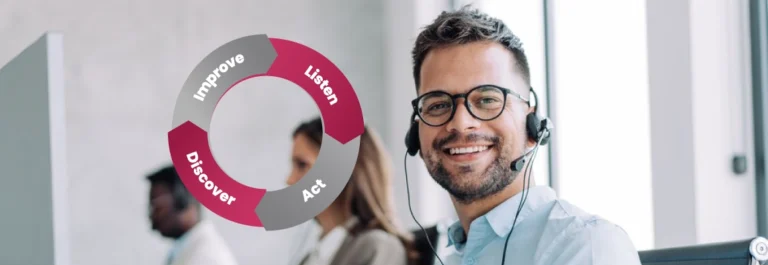Creating mechanisms to gather, analyze, and act on customer feedback is crucial for any business aiming to improve its services and foster lasting relationships with customers. In this article, we’ll explore how to establish an effective Customer Feedback Loop (CFL) campaign, helping you enhance your services, boost customer satisfaction, and drive growth. With examples and actionable steps, you’ll be equipped to optimize your business with the RevJOLT Network.
Why Is a Customer Feedback Loop Essential?
A Customer Feedback Loop is a continuous cycle of gathering feedback, analyzing it, and making improvements based on the insights gained. Here are the main reasons why implementing a CFL is vital for your business:
- Improved Customer Satisfaction: Actively seeking feedback shows customers that their opinions matter, leading to higher satisfaction and loyalty.
- Informed Decision-Making: Analyzing feedback provides valuable insights into customer preferences, pain points, and service gaps.
- Continuous Improvement: A CFL encourages ongoing refinement of services, helping you stay competitive in a rapidly evolving market.
- Enhanced Customer Engagement: Engaging customers in the feedback process fosters a sense of community and connection with your brand.
- Increased Retention Rates: Businesses that respond to feedback tend to have higher retention rates, as customers feel valued and heard.
Steps to Create an Effective Customer Feedback Loop Campaign

Step 1: Define Objectives
Before launching your CFL campaign, clearly define what you aim to achieve. Objectives might include:
- Identifying service areas that need improvement
- Understanding customer needs and preferences
- Tracking satisfaction levels over time
Step 2: Choose Feedback Channels
Select the most effective channels for gathering feedback. Options include:
- Surveys: Create online surveys using platforms like SurveyMonkey or Google Forms to gather structured feedback.
- Social Media: Utilize platforms like Facebook, Instagram, and Twitter to encourage informal feedback through comments and direct messages.
- Email: Send follow-up emails after service interactions to request feedback.
- In-Person: For brick-and-mortar businesses, consider using feedback cards or conducting brief interviews.
Step 3: Develop a Feedback Collection Strategy
Establish a plan for how and when you will collect feedback. Consider these approaches:
- Timing: Gather feedback shortly after a service is rendered for accurate and relevant insights.
- Frequency: Decide how often you will collect feedback—monthly, quarterly, or after significant service changes.
- Incentives: Consider offering incentives, such as discounts or loyalty points, to encourage participation in feedback requests.
Step 4: Analyze Feedback
Once you gather feedback, it’s essential to analyze the data effectively. Key steps include:
- Categorization: Organize feedback into categories such as product features, service quality, and customer support.
- Quantitative Analysis: Use statistical methods to quantify satisfaction levels and identify trends.
- Qualitative Analysis: Review open-ended responses for common themes, insights, and suggestions.
Step 5: Act on Feedback
Analyzing feedback is only valuable if you take action based on it. Consider the following:
- Identify Key Improvements: Prioritize the most critical areas for improvement based on feedback analysis.
- Develop Action Plans: Create specific plans to address identified issues. For example, if customers report long wait times, consider staffing adjustments or process improvements.
- Communicate Changes: Inform customers about changes made based on their feedback, reinforcing that their opinions matter.
Step 6: Monitor Results
After implementing changes, monitor the results to assess the impact of your actions:
- Follow-Up Surveys: Conduct follow-up surveys to gauge whether changes have positively impacted customer satisfaction.
- Track KPIs: Monitor key performance indicators (KPIs) such as Net Promoter Score (NPS), customer retention rates, and service quality metrics.
- Continuous Feedback: Keep the feedback loop ongoing by regularly soliciting customer input to ensure continuous improvement.
Example of a Successful Customer Feedback Loop
A great example of an effective CFL can be seen in RevJOLT Network, a digital marketing platform that has successfully implemented a customer feedback loop to enhance its affiliate program. Here’s how they did it:
- Defining Objectives: RevJOLT aimed to improve user experience within their affiliate network and increase affiliate retention rates.
- Choosing Feedback Channels: They utilized a combination of email surveys, social media polls, and direct feedback through their affiliate portal.
- Developing a Collection Strategy: RevJOLT sent out surveys after significant program updates and quarterly check-ins, offering affiliates a chance to win gift cards as an incentive for completing surveys.
- Analyzing Feedback: The team categorized responses into areas like payout speed, support responsiveness, and platform usability, using both quantitative scores and qualitative comments.
- Acting on Feedback: Based on the feedback, RevJOLT streamlined their payout process and improved support response times. They also revamped their affiliate dashboard based on user suggestions.
- Monitoring Results: RevJOLT followed up with affiliates to assess satisfaction levels post-implementation. They saw a marked increase in NPS and a decrease in churn rates.
Best Practices for an Effective Customer Feedback Loop

To maximize the effectiveness of your Customer Feedback Loop, consider the following best practices:
- Be Transparent: Share how customer feedback has influenced your decisions and improvements.
- Stay Responsive: Promptly acknowledge and respond to customer feedback, whether positive or negative.
- Encourage Continuous Feedback: Make feedback a regular part of your customer interactions, not just a one-time event.
- Utilize Technology: Leverage tools and software that facilitate the collection and analysis of feedback, such as CRM systems or survey platforms.
- Train Your Team: Ensure your team understands the importance of customer feedback and how to effectively collect and act on it.
Sign-Up for RevJOLT Network
If you’re ready to take your customer feedback strategy to the next level, consider joining the RevJOLT Network. Here’s how to get started:
- Visit the RevJOLT Website: Navigate to the official website to learn more about the affiliate program and its benefits.
- Fill Out the Sign-Up Form: Complete the registration form with your details, including your name, email, and website (if applicable).
- Set Up Your Profile: Once registered, set up your affiliate profile and specify your preferred communication channels for feedback.
- Start Promoting: Access marketing materials and begin promoting RevJOLT’s services while actively gathering feedback from your audience.
- Engage in the Community: Join discussions and forums within the RevJOLT community to share insights and gather peer feedback.
Conclusion
Creating a Customer Feedback Loop is an essential strategy for businesses aiming to continuously improve their services and foster strong customer relationships. By following the outlined steps and best practices, you can establish an effective feedback mechanism that not only enhances customer satisfaction but also drives growth.
Ready to optimize your business? Join the RevJOLT Network today and leverage customer feedback to create a thriving affiliate business. Contact us now to learn more and start your journey towards continuous improvement!

